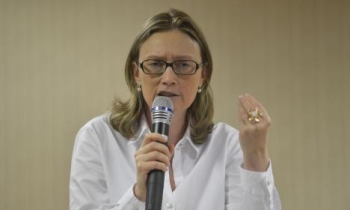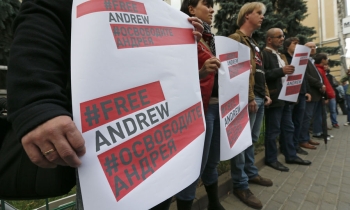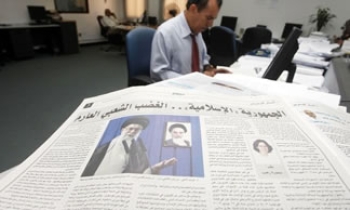Welcome to the Berliner Guardian. No, we won't go on calling it that for long, and yes, it's an inelegant name. We tried many alternatives, related either to size or to the European origins of the format. In the end, "the Berliner" stuck. But in a short time we hope we can revert to being simply the Guardian.
Many things about today's paper are different.
Starting with the most obvious, the page size is smaller. We believe the format combines the convenience of a tabloid with the sensibility of a broadsheet. Next most conspicuously, we have changed the paper's titlepiece and headline fonts. Gone is the striking 80s David Hillman design - adapted over the years - which mixed Garamond, Miller and Helvetica fonts. In their place is a new font, Guardian Egyptian, which is, we hope, elegant, intelligent and highly legible.
The next difference you may notice is colour. The paper is printed on state-of-the-art MAN Roland ColorMan presses, which give colour on every page - something that sets us apart from every other national newspaper. The effect will be to give greater emphasis and power to our photography and, we hope, make the whole paper a touch less forbidding than it sometimes may have seemed in the past.
G2 has also shrunk: it is now a full colour, stapled news magazine with newspaper deadlines. Sport has expanded into its own section - at least 12 pages every day, again in full colour.
As the week progresses you'll notice further changes. There are one or two new sections. There will be new columnists, both in G1 and G2 - most notably the pre-eminent commentator Simon Jenkins, who joins us from the Times to write on Wednesdays and Fridays.
On Saturday there are further changes, including a redesigned and expanded Weekend magazine.
The main change - the format - is in response to unambiguous research which shows that readers increasingly find broadsheet newspapers difficult to handle in many everyday situations, including commuting to work.
But our research showed equally clearly that there were many things readers didn't want changed - including our comprehensive commitment to news and the intelligence and seriousness of our coverage and comment. They welcomed a wide variety of views, but they wanted news first.
The Guardian's website is now read by nearly 11 million people a month around the world. No other paper in Britain comes close to the size and diversity of our audience. The challenge in redesigning the paper was to remain true to the journalism while making it more convenient to read and handle.
Our ability to plan this new paper and invest in it has been made possible through our ownership structure. The Guardian is owned by the Scott Trust, established in 1932 by the same families which had started the paper in 1821. The trust reinvests income from other business to ensure that the Guardian can remain a serious, progressive voice in a world in which news organisations are increasingly in the hands of fewer and fewer multinational companies.
No paper ever stands still. The paper you are reading today will evolve. We would like you to be part of that evolution. Because we don't have a proprietor or shareholders our main relationship is with the readers. It's important to know what you make of the changes and how we could improve still further. We promise to read every single response.
We hope you enjoy this new Guardian. To those hundreds of thousands of readers who have stayed with us throughout - thank you for your loyalty. To the few who found the old broadsheet paper forbidding or inconvenient - welcome back. To new readers who may have been intrigued enough by the Berliner to buy it for the first time in a while - or possibly ever - welcome, too. We hope the Guardian may surprise you.
Email all responses to the new paper to Whatdoyouthink@guardian.co.uk









